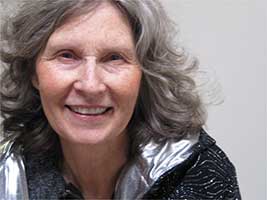ARTIST STATEMENT
All of the arts are a means of participating in what the Sufis call ‘remembering’, a returning to that wholeness that we all know. Co-creating from this level of knowing calls magic into life while at the same time brings the dynamics of life into clearer focus. Through the art-making process wholeness is experienced by the creator and by viewers, who are reminded of their own wholeness. True art, like true literature, makes a lasting impact. It connects to the flow of Being, which expands the spectrum of everyday life.
Personal and archetypal symbols arise from the psyche through nighttime dreams, associative play and creative process. In the Transformational Painting Process, Metaphor work, like dream work, invites the exploration of the symbols and images as a way to integrate and understand our stories. ANAVAMI CENTER utilizes Projective Dream Work techniques in relation to painting in order to enter into a dialogue of wholeness with the psyche. The images that arise in creative process come in the service of integration, healing and creative resolution. This playful investigation in small painting circles encourages each painter to speak about their perception and revelation to each participant’s painting, as if it were their own. This stimulates new understandings for the other painters while changing and releasing one’s own stories,moving the painting images new levels of articulation. It is a poetic rather than a psychological process where the truth registers as an ‘aha’ feeling in the body allowing the conceptual connection to follow.
Today we are faced with severe challenges on the planet that demand more creative thinking than ever before. We face problems which call for a balance of both feminine and masculine principles. One of the few models of this kind of thinking can be found in the creative process of the arts. Even though the participation of the feminine is not yet central to the contemporary Western concept of art, it is an active element that is expanding.
Our cultural definition of contemporary art is set in a context of commodity, which is supported by investment collectors fueling superstar artists. In spite of the financial machinery around the fine art industry there have been bold moves to shake these underpinnings in the last decade. Crafts are being accepted for shows in major museums like the quilt makers of Gees Bend from rural Alabama at the Whitney Museum. There is a grassroots Art Bruit or Raw Art movement of self-trained artists with galleries in most major cities. And there is more and more accepted art from social justice and environmental artists. This broadening of artistic representation is working to develop a greater sense personal inquiry and thus community awareness and connection.
The recognition of creative process as a tool for a meaningful relationship with the subconscious is also becoming more accepted. The art making process, for any kind of participant, forges the essential bridge to integrate community with our inner lives. My teaching experience shows me again and again that image making is our innate gift as human beings. Given supportive conditions, everyone finds value, meaning and often surprises in the creative process. Even the gang members I am currently working with in the Juvenile Justice System, who have no experience in the arts, are often deeply moved by their experience of participation in the process. If we are to begin to solve our current problems and to sustain life on this planet it is participation between the creative process and community, which will support a new kind of thinking about ourselves and our planet.
Images hold the stories that give our lives meaning and are the language of the soul, but their meanings are not always obvious. It requires attention and a willingness to open to a deeper vision outside of consensus reality. As we call forth, express, share and reflect on our stories in community we cultivate connections to the images of everyday life that are available for integration and guidance. Transformational Painting is one way to engage in this kind of participation.

